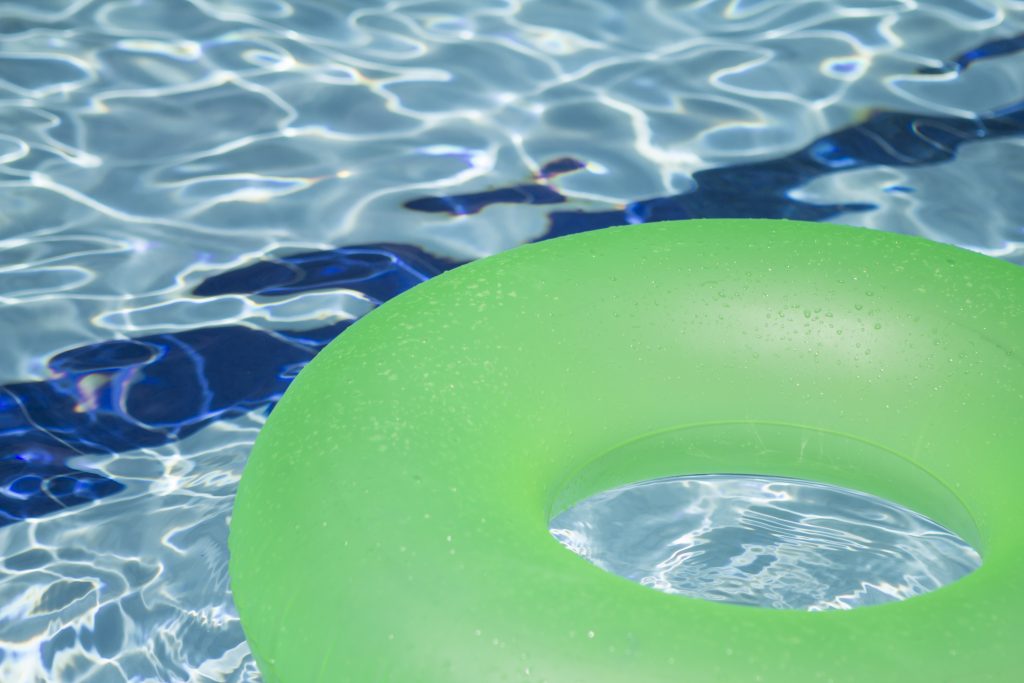Everyday Chemicals
Posted on 7th November 2017As experts in wet chemical fume scrubbing, Parsons have plenty of experience working with a huge variety of chemicals. Often, people think of chemicals as being confined to laboratories or hospitals, but you’d be surprised at how many different types of chemicals we come into contact with every day. We’ve put together a list of 5 common chemicals you’re likely to find on a daily basis, including some of their surprising uses!

Chlorine is commonly used in swimming pools to inhibit bacteria growth.
Chlorine
Chlorine is something we encounter a lot at Parsons, and we tend to deal with it in more dangerous states, such as chlorine tankers or chlorine gas scrubbers. However, chlorine has a huge number of applications and is very widely used in a number of processes. Chlorine is very easy to obtain as it is extracted from salt, and is particularly useful as a disinfectant. Its disinfectant properties have allowed it to contribute to several public health schemes, including swimming pools, food storage, and water safety. You’ll also find chlorine in the manufacturing process for contact lenses, air conditioning, solar panels, paint, aircraft seats, prosthetics and more.
When used and applied correctly, chlorine is very safe and has a huge number of benefits and uses. We’ve encountered chlorine in several different forms – why not check out our case study?
Antifreeze

If an animal ever ingests antifreeze, vodka can be used as an antidote!
Antifreeze, or ethylene glycol, is found in automotive vehicles to help cool engines and prevent overheating. It is also used as a de-icing agent where traditional salt solutions are not appropriate – for example, it is widely used to remove ice from aircraft wings, where salt solutions would cause damage to the metal.
Although most commonly found as ethylene glycol, antifreeze also comes as propylene glycol, which is used when ethylene glycol is not appropriate; such as in food refrigeration units or processing systems, as ethylene glycol is highly toxic.
Animals are often attracted to antifreeze as it has a very sweet smell and taste. While ingesting antifreeze is almost always lethal, if you can get the animal to a vet in time, the treatment involves lots and lots of vodka! Ethanol, the chemical alcohol is made up of, blocks ethylene glycol from crystallising in the body and allows it to be metabolised instead.
Fluoride
Another chemical that occurs in abundance in nature, fluoride is produced when salts from fluorine react with minerals in rocks or soil. As well as being found in nature, you can also find fluoride in the human body – specifically our bones and teeth.
Fluoride is perhaps best known for being added to drinking water to improve public health. When added to drinking water, fluoride has been recognised as helping reduce rates of tooth decay and strengthening enamel in teeth to improve dental health and hygiene. The addition of fluoride in public drinking water has been widely celebrated as one of the best public health schemes of the 20th Century.
Salt
This common dining table ingredient is one of the most recognisable chemicals we encounter daily. Salt, or sodium chloride, naturally occurs in seawater and rock formations, giving us sea salt and rock salt. Salt has been widely used as a flavour and food preservative for thousands of years, helping preserve fish, meat, and certain vegetables against decay. Salt was essential to the development of civilization, with salt roads forming a backbone of the Roman empire, and the use of salt goes back to Ancient Egyptian and Chinese cultures, around 6000 years ago.
Essential to health in helping regulate electrolyte balance in the body, almost every living creature, including some plants, depend on salt. We know that too much is dangerous as well, causing high blood pressure and heart problems. When not being used for food or health, salt is widely used for de-icing paths and in many manufacturing processes, including plastic, paper, rubber, glass, polyester, bleach, soap, and dyes.
Lye

Pretzel anyone? Traditionally pretzels are dipped in a lye solution, giving them their dark brown crust.
Most people recognise lye in the form of heavy-duty oven cleaners or drain unblockers. Lye, otherwise known as sodium hydroxide, has been widely used as a cleaner in this way because it is excellent at breaking down and dissolving grease and fat.
Its fat dissolving properties have also led to it being widely used as a key substance in the disposal of roadkill, as lye is exceptionally good at breaking down natural tissues and fats, and weakens bone to allow it to be processed and more easily disposed of. On top of this, lye is traditionally used in soap making, as once again its grease-breakdown properties make it excellent as a cleanser when used in the right quantities.
Lye is also found in many foods, although food-safe lye is quite different to the substance you’ll find in drain cleaner! Lye is used for curing Nordic lutefisk, olives, canned mandarins, pretzels, bagels, ramen noodles, and century eggs, a Chinese delicacy.
These are just five common chemicals you encounter in some form every day – there are hundreds more in almost everything we use each day, often in ways you wouldn’t expect. Parsons are experts at dealing with chemicals in various states and quantities, and we can handle hazardous chemicals thanks to our extensive health and safety knowledge and experience. Get in touch to find out more about our chemical engineering knowledge.
Back to news